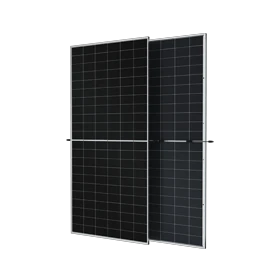Exploring the Benefits and Features of Solar String Inverters for Renewable Energy Systems
Understanding Solar String Inverters A Comprehensive Overview
As the world shifts towards renewable energy sources, solar power has emerged as one of the most popular choices for both residential and commercial applications. Among the essential components of a solar power system, solar string inverters play a critical role in converting the generated electricity into a usable form. This article will explore what solar string inverters are, how they work, their advantages and disadvantages, and their role in an efficient solar energy system.
What is a Solar String Inverter?
A solar string inverter is a device that converts direct current (DC) generated by solar panels into alternating current (AC), which is necessary for powering homes and businesses. The term “string” refers to a series of solar panels connected together, forming a “string.” These inverters are typically installed in systems where multiple solar panels are grouped together, allowing them to operate synchronously.
Solar string inverters are one of the most common types of inverters used in residential solar installations, primarily due to their efficiency and cost-effectiveness.
How Do Solar String Inverters Work?
The operation of solar string inverters can be summarized in a few key stages
1. DC Generation Solar panels convert sunlight into DC electricity. The amount of electricity generated depends on factors such as sunlight intensity, panel orientation, and temperature.
2. Harvesting Power The DC electricity produced by the solar panels flows into the string inverter. If multiple strings of panels are connected, the inverter works to manage the combined output.
3. Conversion to AC The string inverter converts the DC electricity into AC electricity through a process known as inversion. This involves altering the waveform, ensuring the output complies with standards suitable for grid connection or local consumption.
4. Feed into the Grid/Household After conversion, the AC electricity can either be sent back to the grid or used to power electrical appliances within a home or business.
solar string inverters

Advantages of Solar String Inverters
1. Cost-Effective Solar string inverters are generally more affordable than other types of inverters, such as microinverters or power optimizers. This makes them particularly appealing for residential installations with budget constraints.
2. Simplicity Their installation is relatively straightforward, often requiring less complex wiring compared to other inverter types, thereby reducing labor costs and installation time.
3. Centralized Monitoring With a string inverter, system owners typically have a single point of monitoring, making it easier to track performance and troubleshoot issues.
4. Scalability Solar string inverters allow for easy expansion of the solar system. Homeowners can add additional panels without significant changes in system configuration.
Disadvantages of Solar String Inverters
1. Performance Issues with Shading One of the primary drawbacks of string inverters is their reliance on the entire string. If one panel is shaded or underperforming, it can drag down the efficiency of the entire string, leading to reduced energy output.
2. Limited Flexibility Unlike microinverters that can work independently, string inverters require panels to be grouped according to similar orientations and angles. This can limit installation flexibility, especially in homes with complex roof designs.
3. Single Point of Failure Since string inverters centralize the conversion of power, if the inverter fails, the entire system may stop producing electricity until repairs are made.
Conclusion
Solar string inverters have proven to be a reliable and cost-effective solution for solar energy systems, especially in residential applications. While they come with their own set of advantages and disadvantages, understanding their functionality is crucial for homeowners and businesses looking to invest in solar energy. As technology continues to advance, string inverters may evolve further, potentially incorporating smarter features that enhance their performance and reliability. With the increasing emphasis on renewable energy, investing in a solar power system with the right inverter technology is a step towards a more sustainable future.
-
Understanding the Advantages of Solar String Inverters for Your Energy SystemNewsApr.29,2025
-
Choosing the Right PV Inverter: A Comprehensive GuideNewsApr.29,2025
-
The Future of Solar Power: Exploring Bifacial Solar PanelsNewsApr.29,2025
-
The Complete Guide to Solar Panels: Efficiency, Cost, And InstallationNewsApr.29,2025
-
The Best Options for Efficiency and Cost-EffectivenessNewsApr.29,2025
-
Harnessing the Power of Off-Grid Solar Inverters for Energy IndependenceNewsApr.29,2025







